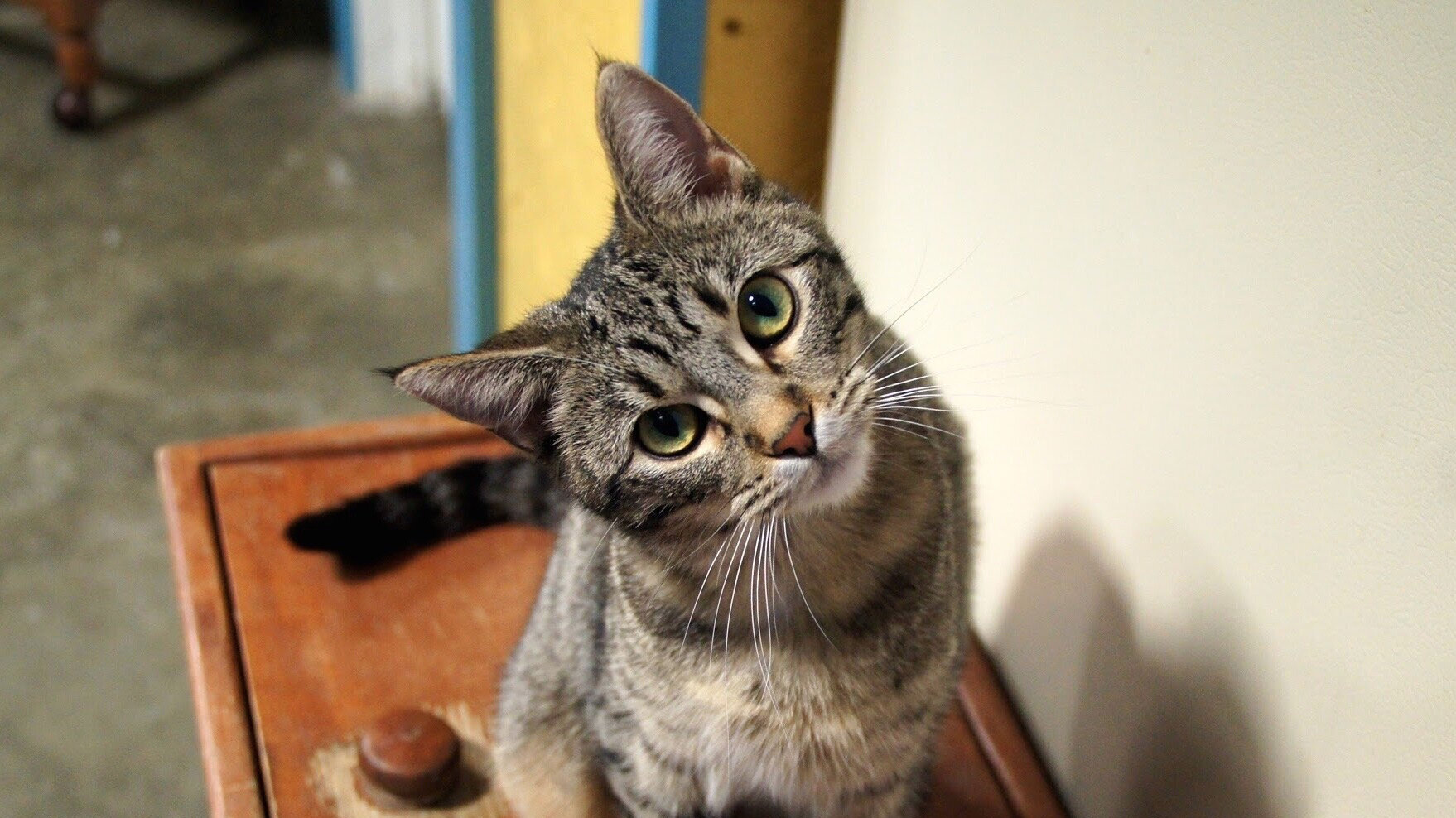
GonaCon™ Contraceptive Study
The Study
Studies in both male and female cats led by Dr. Julie Levy (University of Florida Shelter Medicine Education), plus another small study conducted by the Center for Conservation and Research of Endangered Wildlife (CREW) at the Cincinnati Zoo, demonstrated a particularly promising contraceptive effect in female cats of a vaccine called GonaCon. To further evaluate this vaccine's potential to be the first long-term contraceptive commercialized for female cats, ACC&D sponsored a study which began November 2015.
The study utilized GonaCon in a “natural” non–laboratory environment, where cats lived indoors or out, experienced seasonal variations in temperature and light/darkness, and were genetically diverse. Based on results from prior studies, the goal was for the vaccine to prevent pregnancy in the study’s treated cats for an average of over three years with a single shot. Dr. Amy Fischer-Brown (University of Illinois Department of Animal Sciences) served as Principal Investigator, and Dr. Julie Levy as Co-Investigator.
the Results
The study provided a wealth of knowledge about the vaccine, cat behavior, and how to design, and successfully conduct, a breeding study with cat welfare as the utmost priority. We hope this progressive model of research will positively shape future studies intending to benefit free-roaming cats.
Though we designed the study to last three to five years, we completed the study at the one-year mark (November 2016) due to a higher rate of pregnancies than our benchmark for continuing the study. Female cats in the earlier laboratory study were contracepted 36 months on average (and 25% still infertile at the study’s end at 5 years). In contrast, in this study only 30% of the cats were still contracepted at the one year mark. The poor contraceptive efficacy of this vaccine versus prior studies was not anticipated. You can find further discussion in the study published February 21, 2018, available at this link.
The Cats
The 44 cats who participated in this study contributed greatly to cat-kind. All were spayed and adopted into loving homes.
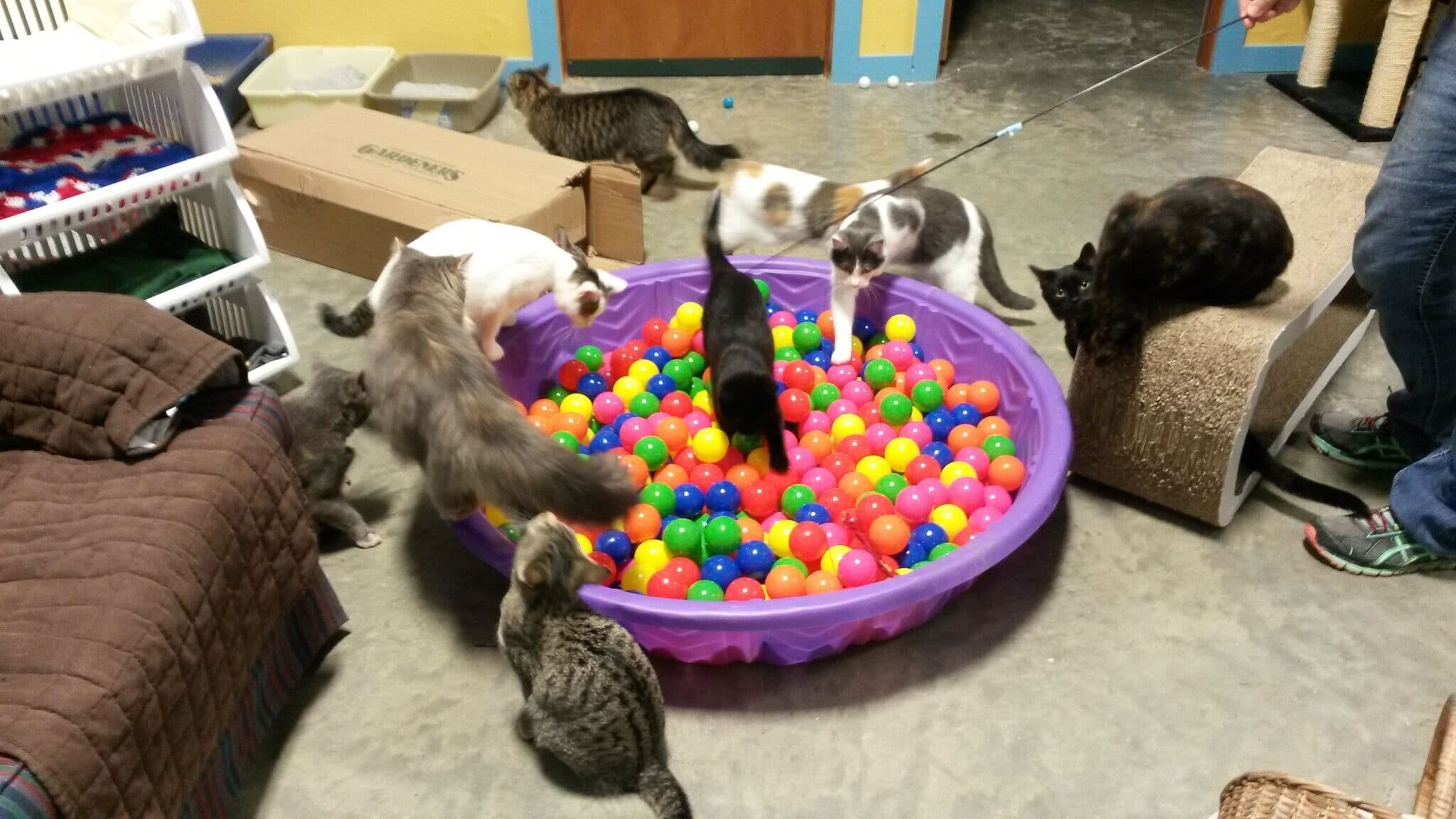
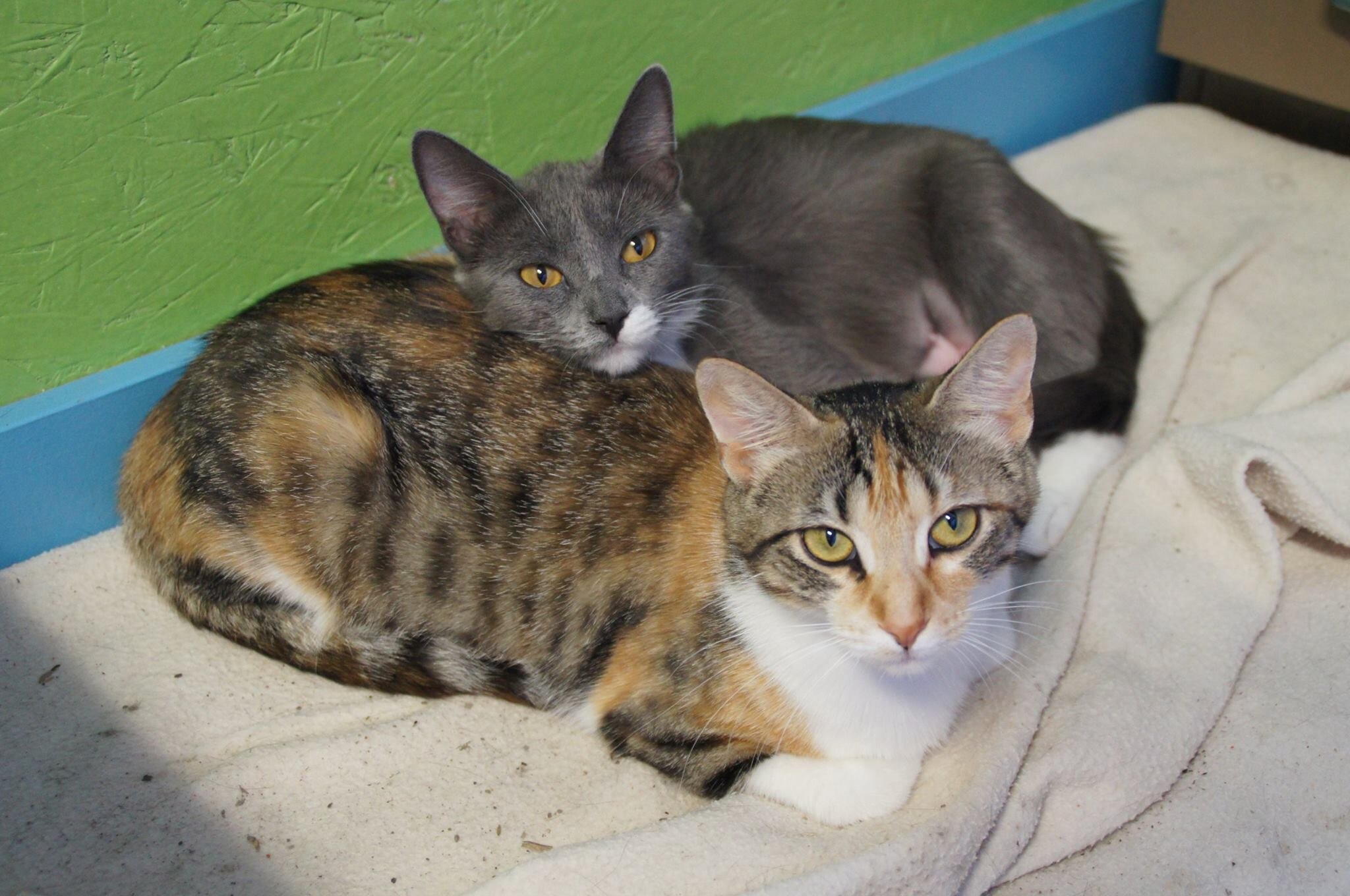
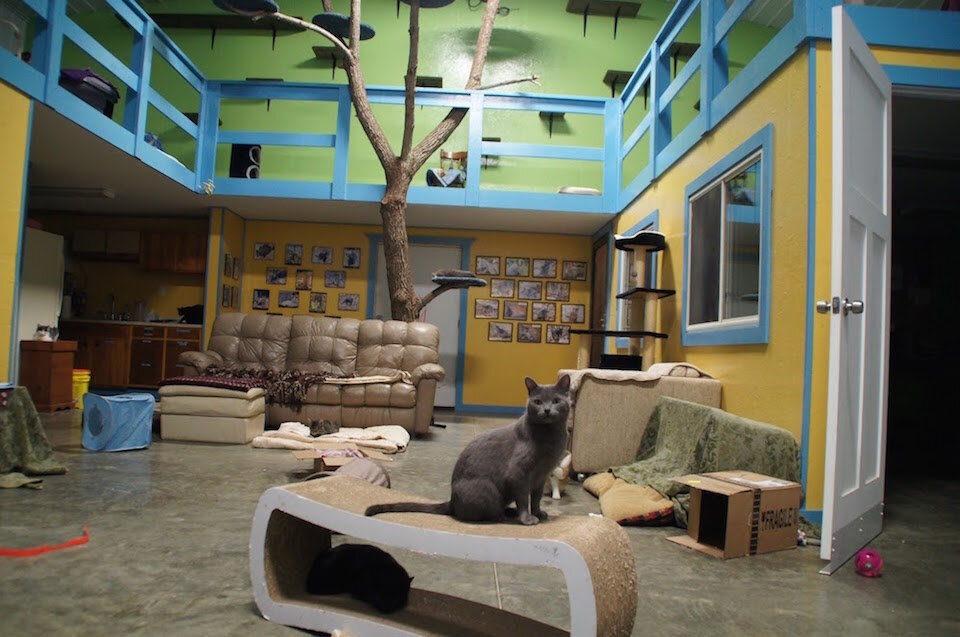
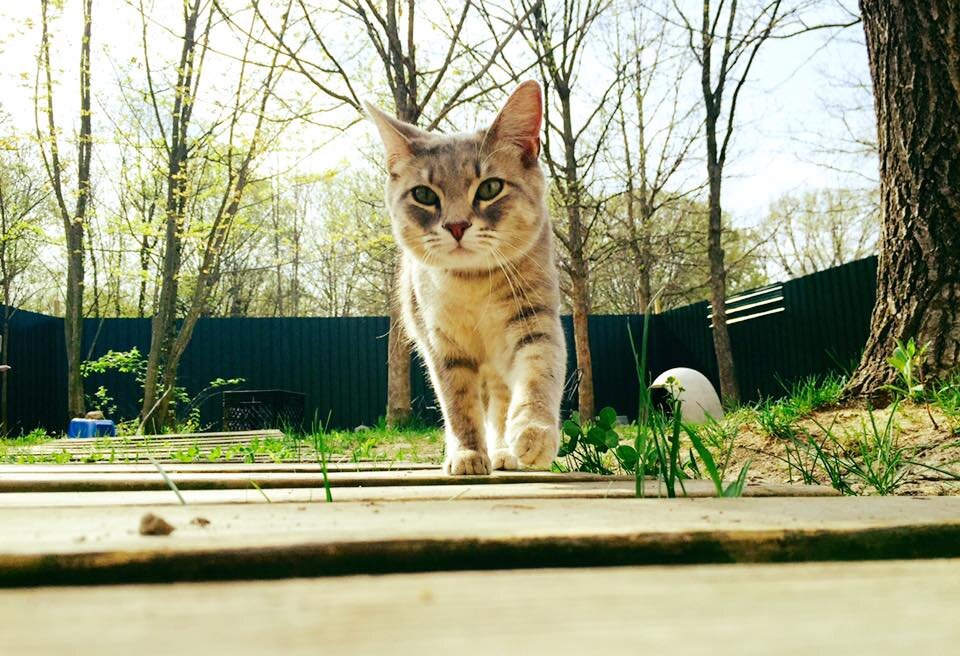
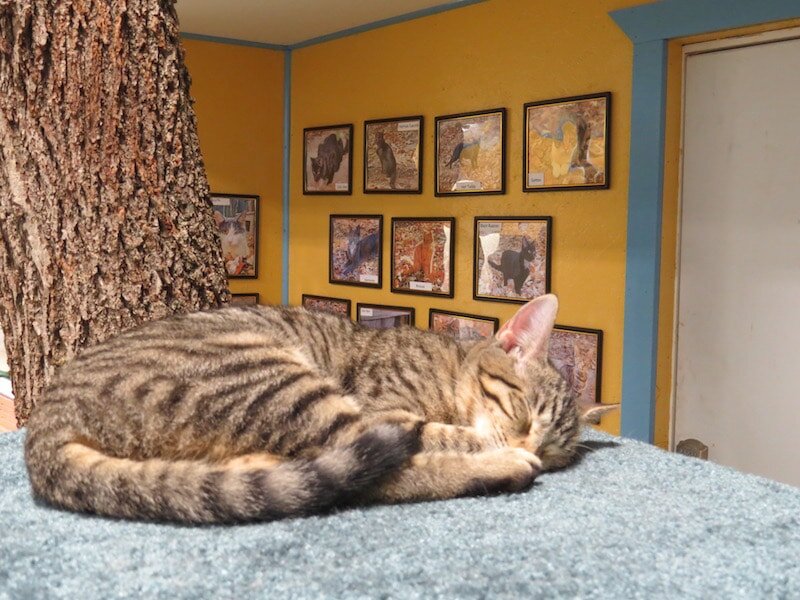
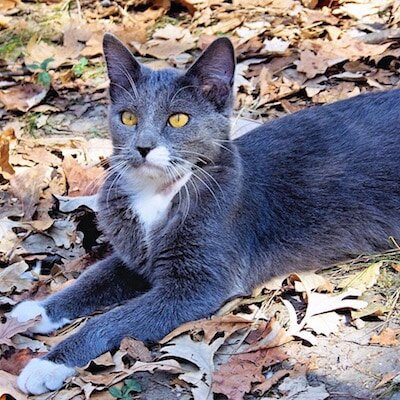
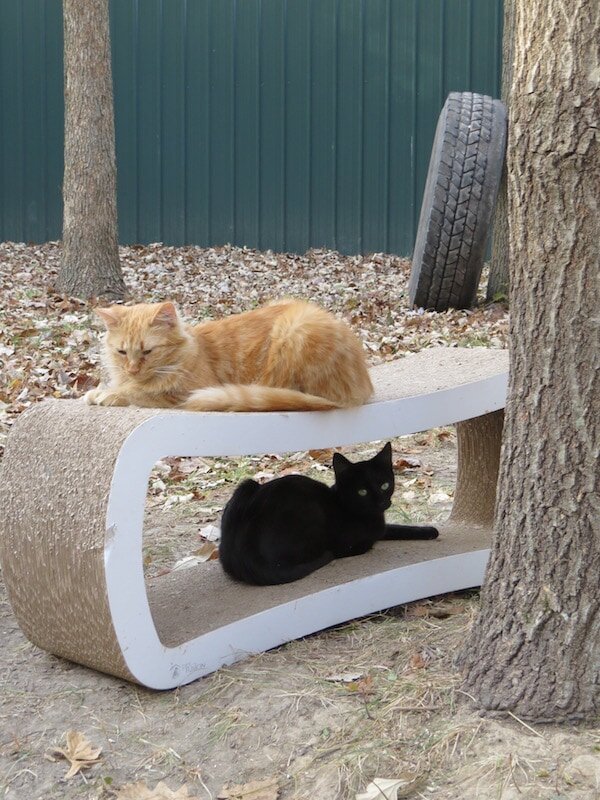
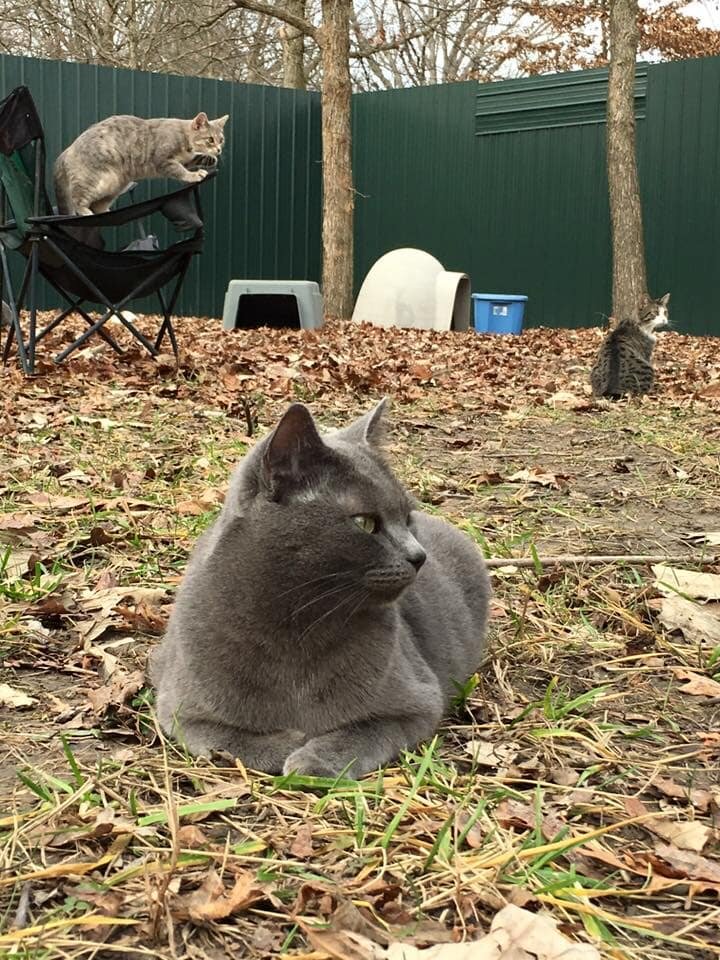

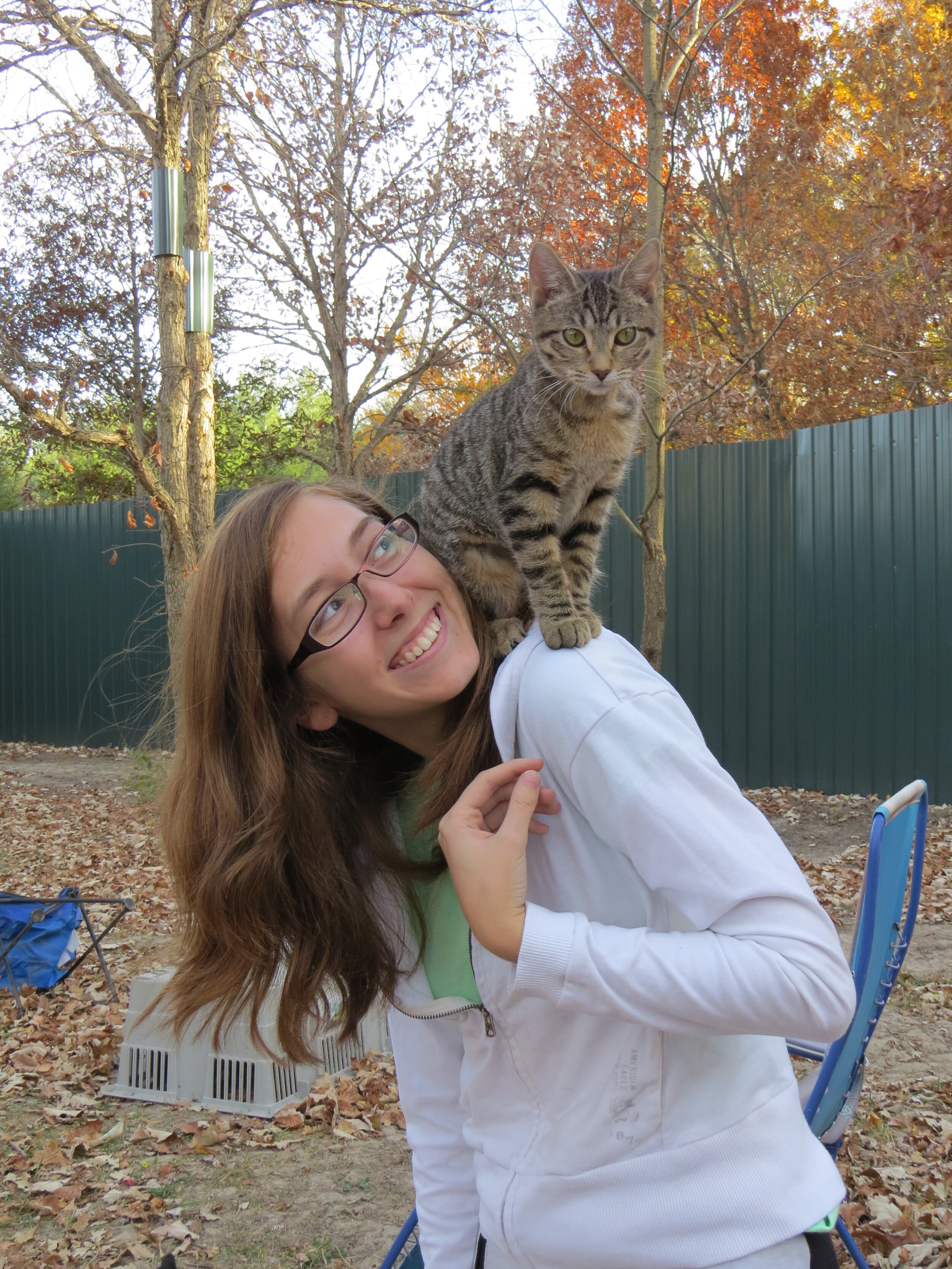
Advancing feline contraception at Clowder Concepts
From drafting facility plans to implementing a contraceptive study, the well-being of cats at Clowder Concepts was always the utmost priority.
The Place
A facility was created that was uniquely suited to the objective where cats enjoy the highest standards of enrichment and welfare. They had free access to a specially built 2-story indoor home where they could snooze on comfy couches or in warm cat beds, relax on cat trees, or climb a two-story real tree made especially for them! And when they wanted some fresh air, they had access to a large outdoor yard that was enclosed with a predator-proof fence. Outside there were trees, climbing structures, and plenty of surfaces where they could soak up the sun.
In addition to Dr.Fischer, a full-time Project Manager, and two part-time employees, multiple student volunteers came for daily visits. Their primary job was to love the cats—cuddle with them on couches, entertain them with toys, and make sure that each individual got lots of positive human attention. The cat’s environment was designed to help these once homeless cats transition easily into adoptive homes at the end of the study. Full learning about designing this breeding colony has been published in the July 2018 online issue of the Journal of Feline Medicine and Surgery, available here.
Study Funders
Thank you to the Morris Animal Foundation and John T. and Jane A. Wiederhold Foundation for generously funding this study and supporting new ways to humanely manage cat populations.

